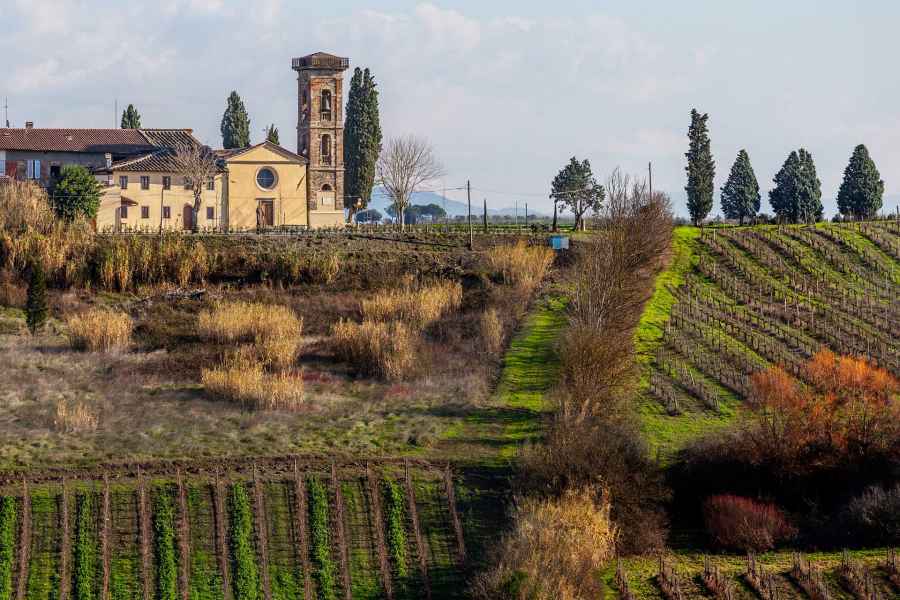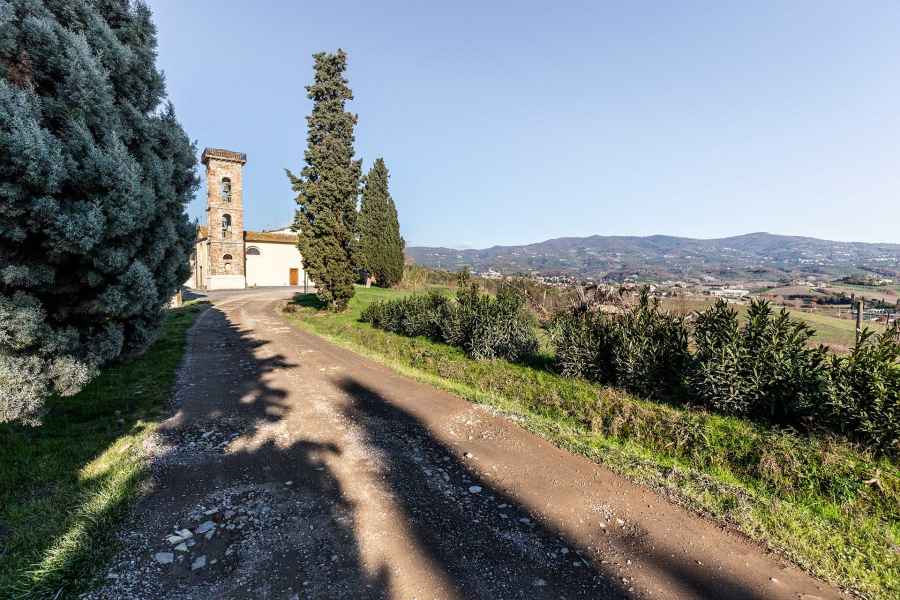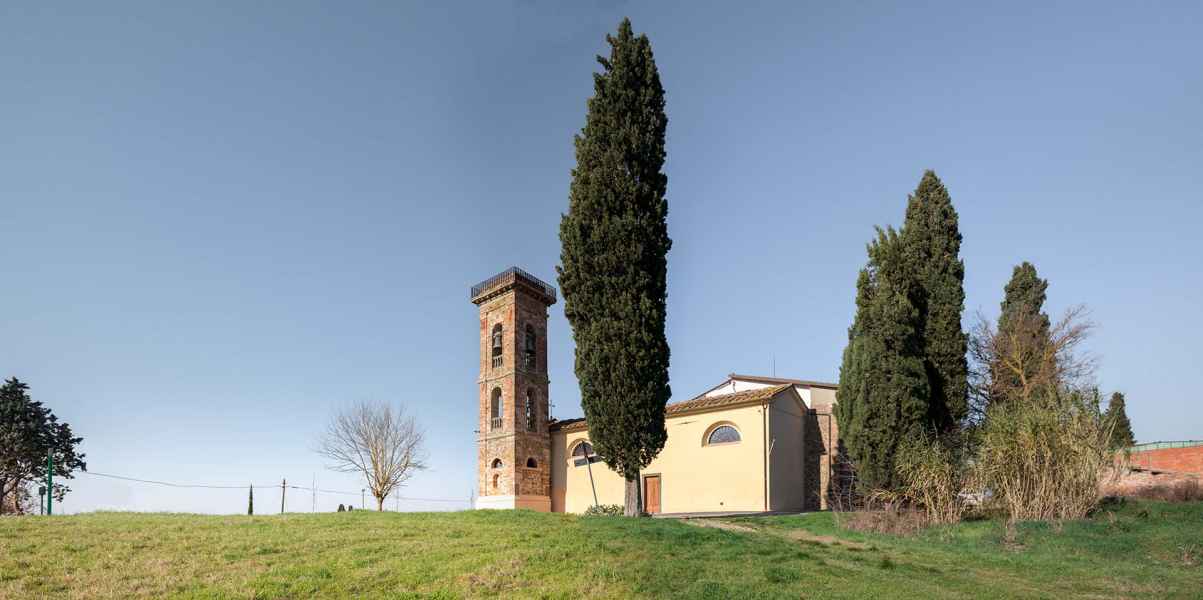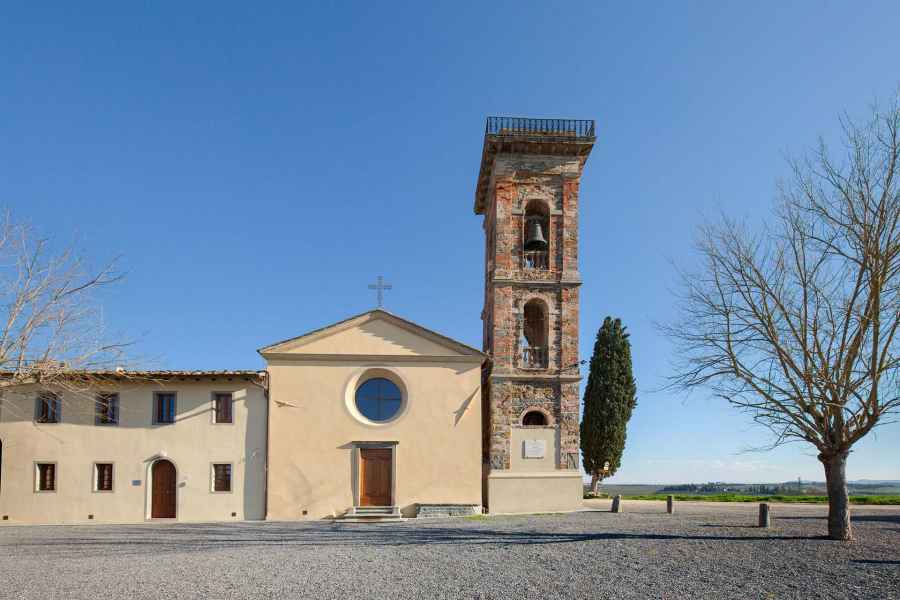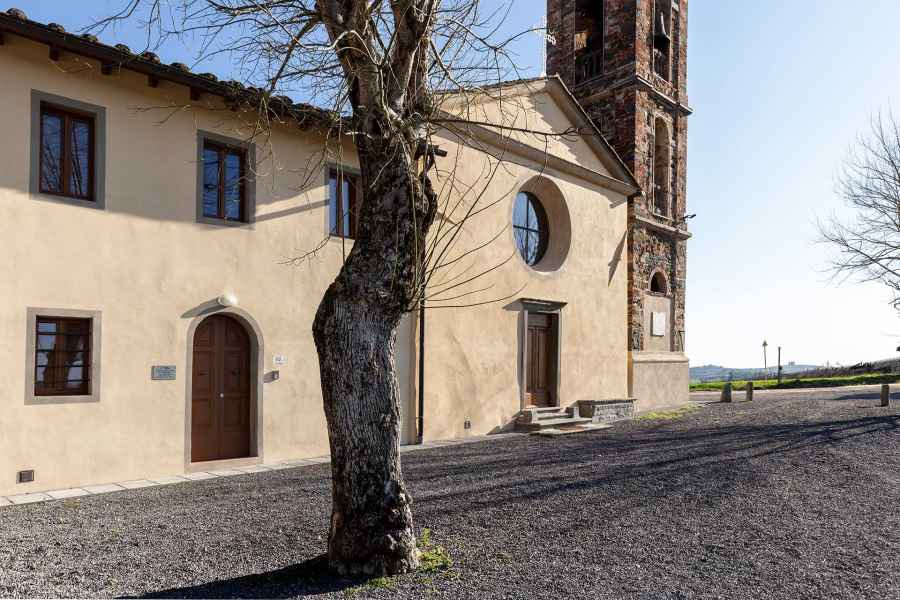The area is currently located in the municipality of Vinci, a short distance from Cerreto Guidi. From the beginning, in fact, the church of San Bartolomeo a Streda belonged to the parish of Cellere, the ancient parish church of Cerreto. Nonetheless, the small hamlet that took its name from the parish church of San Bartolomeo has always been part of the territory dependent on Vinci. In this area, the da Vinci family owned the most profitable of their farms, situated in the locality of la chosta, in the community of San Bartolomeo a Streda. Just the production of wine produced forty barrels a year, and the total value of the property was estimated at one thousand florins.
The locality existed already in the year 1000. The first attestation of a place called Strela, where there was already a village dependent on the parish of Cellere, the ancient parish church of Cerreto, dates back to 1014. However, the small village entered soon into the orbit of the family of the Counts Guidi. A famous document of the mid-13th century reporting the details of the sale to Florence of the Valdarno assets of the Counts Guidi lists, together with the castle of Vinci, also totam ecclesiam sancti Bartolomei de Streda, with the men and settlers of the entire rectory of the castle. It is therefore probable that it was the Counts Guidi who founded the small oratory of San Bartolomeo, in a town halfway between the family castles of Cerreto Guidi and of Vinci. The village and the church—which still maintained their spiritual dependence on the parish church of Cerreto—were still found in the ‘castle’ (rectory) territory of Vinci.
A map by the Capitani di Parte Guelfa from the late 16th century represents the community of San Bartolomeo a Streda. The position of the church is perfectly recognizable, situated near the main road network, roughly corresponding to the provincial road leading from Vinci to Toiano and then to Cerreto. The church is located on the ridge of a small hill overlooking the stream Streda, which at that point curves decidedly toward the west. From the small hillock of the church of San Bartolomeo, populated by peasant houses, it was possible to descend toward the valley along the numerous lanes that crisscrossed that slope during Leonardo’s time. At the bottom of the valley, near a bridge, there was a mill powered by the water from a millrace deriving from the stream. The da Vinci family owned a farm in these areas as early as 1451. As we read from the land registry records of Antonio di ser Piero, Leonardo's paternal grandfather, the parcels of land were located in the locality of la chosta and stretched as far as to skirt the stream Streda. The same properties are declared in the land registry of 1469. This time it was Leonardo's father, Ser Piero di Antonio, who described its value. The lands of the la chosta farm in the community of San Bartolomeo a Streda were cultivated with wheat, fodder, and wine, but the portion involving the vineyards must have been significant if the majority of the income was accounted for by wine (40 barrels) and if the total value of the property was estimated at 1000 florins.
The ancient church of the Counts Guidi appears in the minuscule, late 16th-century drawing of the Capitani di Parte Guelfa map of the community of San Bartolomeo. It is depicted as a small church with a single hall, with a gabled roof and a bell gable surmounted by a cross, corresponding roughly to its appearance today, with the exception of the bell tower, certainly built in later times. The façade—characterized by the large circular window, and with top part ending at the cross above the tympanum—is also the same the church of San Zio must have had during Leonardo’s time, drawn with the same particulars in a detail on the map of the community of San Zio.
Texts by
Silvia Leporatti / English translation by John Venerella
Related resources
Related places
Gallery
Error
Related resources
Related places
Gallery






